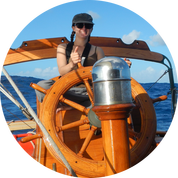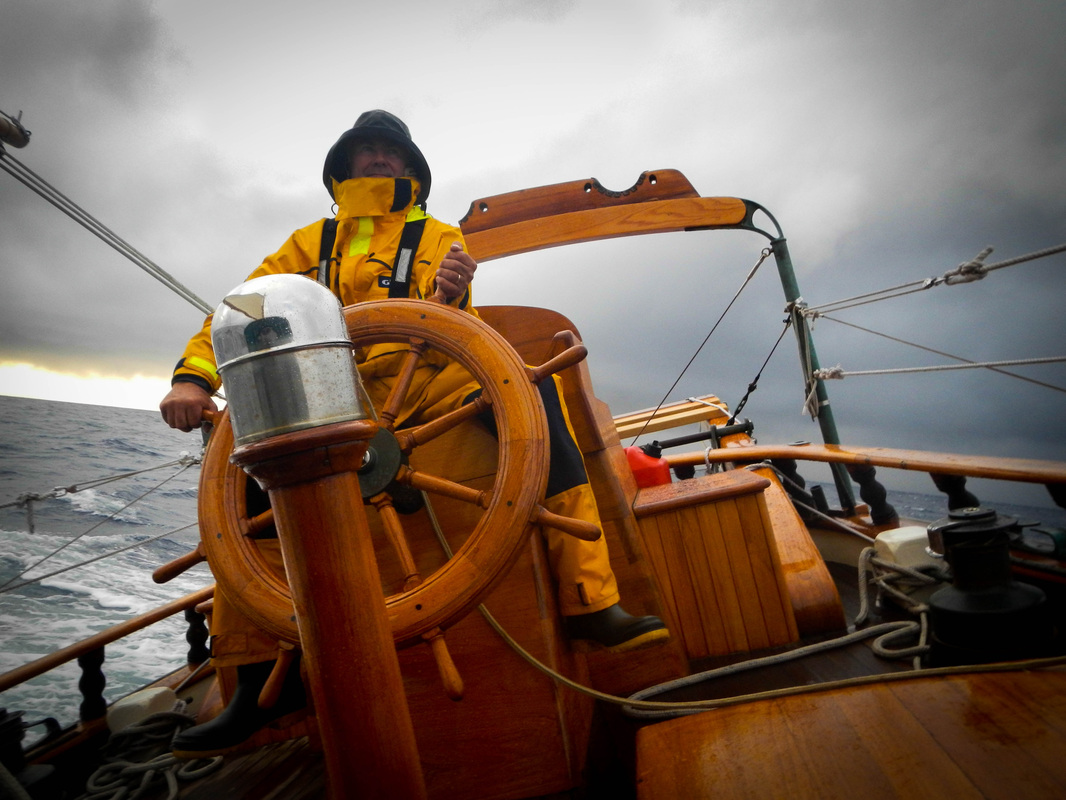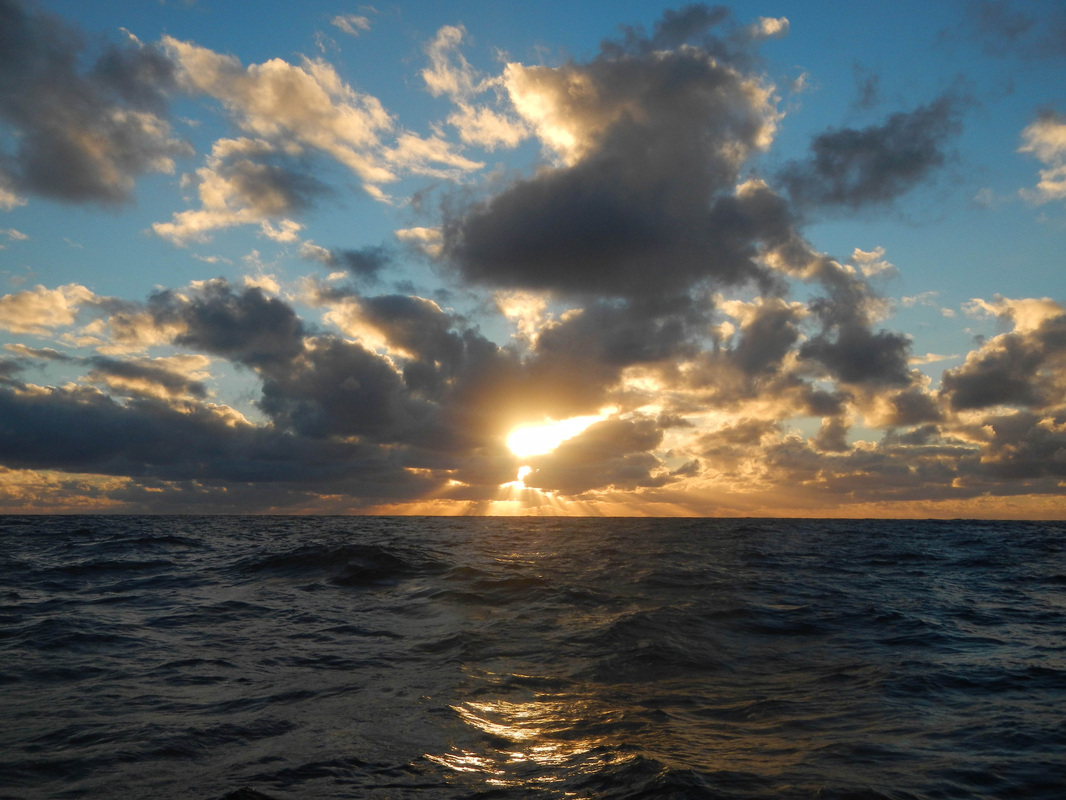
Danica Cowan worked in a cancer research lab at UCLA for two years, obtained an MS in nutrition science from Tufts, and is now on academic leave from pursuing her Registered Dietician certification. She is currently on her second 10-month voyage from Maine to the Caribbean aboard her family’s traditional wooden schooner. She is joined by her parents Beverly and Horatio “Ted” Cowan III, husband Isaac Brown, brother Horatio “Scott” Cowan IV, and his girlfriend Molly Segee. Danica and crew are collecting data on microplastics for the Marine Environmental Research Institute. Follow their adventures on their blog: schoonerkoukla.wordpress.com.

Piloting the ship through the storm. (Photo by Danica Cowen)
From Danica:
Few boats, or people, ever head so far from civilization. As we sail hundreds of miles from land, the ocean becomes a stunning deep blue, almost purple. Sargasso weed stretches out in long ribbons atop the swells, trailing to the horizon. Flying fish occasionally burst forth without warning to dart across the wave caps. There is nothing comparable to the feeling of being at the wheel in the open ocean, with no other object in view but sea and sky and a strong breeze sending the boat crashing through the waves.
When I signed up to collect water samples for ASC, it sounded like a piece of cake. Take bottle, rinse three times, fill with seawater. Top the bottle with foil, label it and record the location. Easy. And for the most part it was (other than the minor unpleasantness of handling frigid seawater with gloveless hands). It seemed a small task to do to contribute toward understanding the influence of plastics on the marine environment. But when we headed offshore, things got a bit more complicated.

Sunset over the open ocean. (Photo by Danica Cowen)
Smaller boats typically go south to the Caribbean via the Intercoastal Waterway and the Bahamas, but with Koukla’s 9-foot draft and tall masts, this is not an option, so it was offshore for us
We expected it to be rough the first day out as we exited the Chesapeake and crossed the Gulf Stream, and it was, but after that it was supposed to calm down. It didn’t. On the third day a storm front barreled through and knocked us so far over water was knee-deep on the downwind deck. Things calmed down some when the storm passed, but the seas stayed rough, and for 12 days we were tossed about constantly. Normal activities such as cooking or even reading became impossible. Because of the motion we were confined to just the two aft cabins and the wheelhouse. Meanwhile, with the crew split up into alternating 4 hours on and 8 hours off watches, we became out of sync with normal day/night cycles and each other.
Despite this, (almost) every day after I got off watch around noon I would strap in to the safety harness to keep me attached to the boat and collect a water sample. Isaac, not having grown up on boats, was sometimes too seasick to help me collect samples, so I would wedge myself in against the rail and haul up buckets of purple-blue seawater that became crystal clear when poured into bottles. With the large degree of heeling and large swells I usually ended up pouring half the bucket all over myself.
My mom seemed to think this was all quite funny, watching me pull up bucket after bucket as we sailed along, filling only a fraction of the bottle as the waves caused the stream of water to snake about. It was much easier with a second person to help, but still no piece of cake.
Despite the wonder of being offshore, surrounded by nothing but sea and sky, after being tossed about for bordering on two weeks, when we finally pulled into the calm waters of the harbor of San Juan, Puerto Rico, we literally shouted with relief. Sure, we hadn’t reached the US Virgin Islands like we had planned, but we’re a sailboat, we go where the wind takes us.
Learn more about our Marine Microplastics project and keep up with ASC by subscribing to ASC’s blog, liking us on Facebook and following us on Twitter (@AdventurScience), Instagram (@AdventureScience) and Google+.



